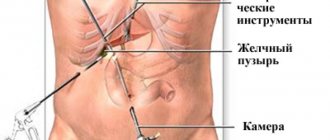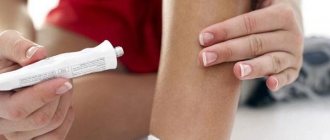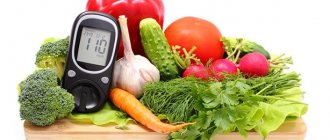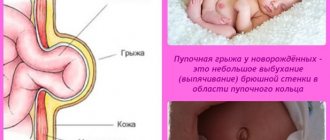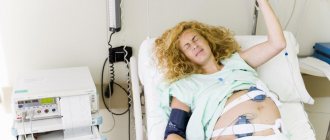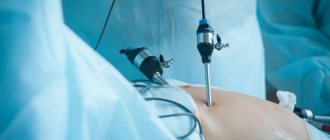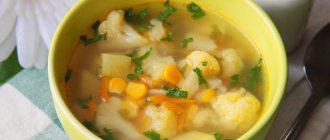» Weight loss » Diets » Diet after surgery
0
355
Article rating
A diet after surgery with a special menu helps the human body recover faster after surgery. Indeed, in any case, no matter what organ the operation is performed on, it is stressful for the body.
The peculiarity of surgical intervention as a medical procedure is that after it, most patients develop breathing problems, work slows down and the gastrointestinal tract cannot function normally for some time, and the excretory systems are also unable to work at full capacity.
In addition, in most cases, people cannot move normally for varying periods of time immediately after the operation.
Even if the intervention affected organs not directly related to the digestive tract, a gentle diet after surgery will still be necessary in any case. Since during this period the body needs to be as active as possible in order to begin restoration and healing processes, food should be nutritious, strengthening and also easily digestible, so that the body does not spend a lot of energy on its absorption, but does things that are more important during this difficult period.
In the first days after some types of operations, the patient sometimes cannot eat anything on his own; in this case, he is fed through a tube. These are operations on the organs of the digestive system, in the case of stomach cancer, peritonitis, and also after heart surgery. After 3-4 days, on average, such patients are prescribed a zero diet of group A, which will be discussed in more detail later.
Immediately after the operation, milder patients are given liquid food, mainly porridges and soups of a liquid consistency. It is important to follow the basic rule during this period: do not give too much food, so as not to impede the functioning of the digestive system. It is better to eat more often, but little by little.
General rules
Surgery is often the only possible and effective method of treating/preserving the patient’s life, and proper nutritional support, regardless of the type of operation, is an essential component of the patient management algorithm in the postoperative period.
Therapeutic nutrition after surgery depends, first of all, on the type, volume and nature of the surgical intervention. It is obvious that nutrition after surgery on the gastrointestinal tract differs from nutrition after surgery on organs not related to the gastrointestinal tract or nutrition of patients operated on for oncology. Moreover, modern dietetics involves individual correction of therapeutic diets depending on the patient’s nutritional status, the presence of metabolic disorders (protein-energy deficiency), and complications, which makes it possible to speed up the rehabilitation period. Dietary nutrition is of great importance after surgery on the upper (esophagus, stomach) and lower (intestines) gastrointestinal tract, organs of the hepatobiliary system.
Parenteral nutrition after surgery on the gastrointestinal tract begins with sequentially prescribed surgical Diets 1 (0) A , 1 (0) B and 1 (0) C and the basic Diet No. 1 (mashed/non-mashed version). The main goal of these diets is to unload/spare the organs, provide the body with a minimum amount of food nutrients, and prevent intestinal disorders ( flatulence , constipation ). The diet includes foods that are easily/well digestible, containing complete proteins/fats/carbohydrates/micronutrients and an increased amount of fluid.
At the same time, salt is sharply limited. The load on the digestive organs should increase gradually, which is achieved by prescribing fasting on the first postoperative day and gradually expanding the diet and volume of food taken: on day 2 - 250-300 ml of sweet warm tea/rosehip infusion every 15 minutes, a teaspoon; on days 3-4, with normal peristalsis, Diet No. 1(0) A and 2 soft-boiled eggs are prescribed; from 5-8 days Diet No. 1(0) B ; on days 9-10— Diet No. 1(0) B.
Each of these diets differs in the set of permitted foods, the consistency of the dishes, the content of dietary fatty acids in the diet, the energy value, the amount of food consumed and the diet. And if Diets 1(0) A - 1(0) B are not complete and the period of stay on each of them is 2-4 days, then Diet No. 1 provides physiologically complete nutrition and the patient can stay on it for a long period.
The diet on Diet No. 1 contains 100-110 g of protein, the source of which is boiled fish/boiled minced meat, egg white omelets, fresh pureed cottage cheese. The fat content is also at the level of physiological norms or even higher (80-90 g). If they are poorly tolerated (regurgitation, bitterness in the mouth, diarrhea), fats are limited to 60-70 g/day. The carbohydrate content is at the level of 300-320 g, the restriction concerns mainly easily digestible carbohydrates.
Despite a fairly wide range of products, the basic rules and restrictions remain the same (consumption of low-fat fish/beef, non-concentrated meat soups, dried (yesterday's) wheat bread, low-fat chicken dishes, boiled/raw pureed vegetables, unsweetened cookies, low-fat fermented milk products, cheese, dietary sausages, garden herbs, buckwheat/rice, potatoes, fresh fruits and berries.
Fried foods, strong meat-based broths, spicy/salty foods, smoked foods, canned food, fresh bread, solid animal fats, spicy snacks, and dough products are prohibited. Culinary methods of cooking are also preserved: boiled/steamed, and after boiling, stewed/baked. After 6 months after surgery, you are allowed to gradually switch to a normal diet.
A postoperative diet for operations on the large intestine ( colectomy ) involves transferring the patient after surgical diets to therapeutic Table No. 4 / its varieties (in the presence and predominance of certain functional disorders of the intestine - diarrhea / constipation). The main task is to create conditions so that during the first 3-4 days the patient does not have bowel movements and especially constipation.
After surgical interventions on the abdominal organs without violating the integrity of the digestive tract (pancreas, gall bladder, spleen), the basic diet is Table No. 5 / its variants ( 5A , 5B , 5P ).
The postoperative diet for operations outside the alimentary tract is based on standard operating tables for the first 1-2 days, and then transferred to treatment Table No. 15 with individual correction. Thus, the diet after heart surgery ( bypass surgery / stenting ) is aimed at reducing the risk of continuing the process of developing atherosclerosis/coronary artery disease, which is based on the nutritional factor, as well as repeated vascular operations. This is achieved by reducing the energy value of the diet and adjusting the diet, for which a hypocholesterol diet .
The postoperative diet acquires particular importance after operations for malignant tumors both on the gastrointestinal tract and outside of them. The situation is complicated by the fact that, as a rule, surgery for oncology is accompanied by preliminary/subsequent administration of chemotherapy / radiation therapy , which negatively affects the patient’s condition.
The diet for cancer after surgery is tailored individually, taking into account the nutritional status of the patient, the condition of the organs that limit the ability to absorb foods, appetite and psychological state. The diet and its calorie content varies widely depending on the organ being operated on, the stage of the disease, and the presence/absence of significant weight loss.
Example of a diet menu after surgery for the first 3 days
In the morning:
- Warm tea with sugar – 100ml, thin berry jelly – 100g;
Every two hours:
- Strained apple compote – 150-200ml;
- Low-fat meat broth – 200g;
- Rosehip decoction – 150ml, jelly – 120g;
- Warm tea with sugar and lemon – 150-200ml;
- Slimy cereal decoction with cream – 150-180ml, fruit jelly – 150g;
- Rosehip decoction – 180-200ml;
- Strained compote – 180ml.
After an initial gentle diet after surgery, a transitional restorative diet is prescribed, aimed at a gradual transition to a full-fledged diet.
Authorized Products
The diet after surgery in most cases includes the following foods in the diet:
- Lean red meat (beef/veal), well boiled and chopped, poultry (chicken/turkey) and rabbit.
- White fish of low-fat varieties (hake, pike, cod, pollock) steamed/boiled.
- Slimy soups made from rice, oatmeal and buckwheat in vegetable/chicken broth with the addition of butter/low-fat cream/egg-milk mixture to the finished dish.
- Dried white bread, crackers, savory cookies.
- Porridge of semi-liquid consistency in milk/water from oatmeal, buckwheat, rice cereals, with the addition of butter.
- Low-fat cottage cheese, fermented milk products, soft-boiled chicken eggs/in the form of a steam omelet.
- Virgin vegetable oils (linseed, olive, sunflower, corn).
- Freshly squeezed juices, rosehip infusion, weak green/herbal tea with cream, sweet berry jelly/jelly, still mineral water.
Table of permitted products
| Proteins, g | Fats, g | Carbohydrates, g | Calories, kcal | |
Vegetables and greens | ||||
| zucchini | 0,6 | 0,3 | 4,6 | 24 |
| potato | 2,0 | 0,4 | 18,1 | 80 |
| beet | 1,5 | 0,1 | 8,8 | 40 |
Cereals and porridges | ||||
| buckwheat (kernel) | 12,6 | 3,3 | 62,1 | 313 |
| semolina | 10,3 | 1,0 | 73,3 | 328 |
| cereals | 11,9 | 7,2 | 69,3 | 366 |
| white rice | 6,7 | 0,7 | 78,9 | 344 |
Bakery products | ||||
| white bread crackers | 11,2 | 1,4 | 72,2 | 331 |
Confectionery | ||||
| marshmallows | 0,8 | 0,0 | 78,5 | 304 |
| paste | 0,5 | 0,0 | 80,8 | 310 |
Dairy | ||||
| milk | 3,2 | 3,6 | 4,8 | 64 |
| kefir | 3,4 | 2,0 | 4,7 | 51 |
| cream | 2,8 | 20,0 | 3,7 | 205 |
Cheeses and cottage cheese | ||||
| cottage cheese | 17,2 | 5,0 | 1,8 | 121 |
Meat products | ||||
| boiled beef | 25,8 | 16,8 | 0,0 | 254 |
| beef liver | 17,4 | 3,1 | 0,0 | 98 |
| boiled veal | 30,7 | 0,9 | 0,0 | 131 |
| rabbit | 21,0 | 8,0 | 0,0 | 156 |
Bird | ||||
| boiled chicken | 25,2 | 7,4 | 0,0 | 170 |
| turkey | 19,2 | 0,7 | 0,0 | 84 |
Eggs | ||||
| chicken eggs | 12,7 | 10,9 | 0,7 | 157 |
Oils and fats | ||||
| butter | 0,5 | 82,5 | 0,8 | 748 |
| ghee | 0,2 | 99,0 | 0,0 | 892 |
Non-alcoholic drinks | ||||
| mineral water | 0,0 | 0,0 | 0,0 | — |
| black tea with milk and sugar | 0,7 | 0,8 | 8,2 | 43 |
Juices and compotes | ||||
| jelly | 0,2 | 0,0 | 16,7 | 68 |
| pumpkin juice | 0,0 | 0,0 | 9,0 | 38 |
| rose hip juice | 0,1 | 0,0 | 17,6 | 70 |
| * data is per 100 g of product | ||||
Table 0, recipes:
Blackcurrant jelly. 1½ tbsp. spoons of black currant berries, 1 tbsp. a spoonful of sugar, 1 teaspoon of potato starch, a few blackcurrant leaves, 200 ml of water.
Kissel is prepared only from ripe and juicy berries. Sort the currants and rinse well with cold water. Then squeeze out the juice, pour it into a bowl (possibly enamel) and refrigerate. Meanwhile, put the remaining mass in a saucepan, add hot water and boil for about 5 minutes along with washed currant leaves (optional). Then strain the broth through cheesecloth or a fine sieve. Pour sugar into the prepared broth, boil, and remove the foam from the surface with a slotted spoon. Pour starch diluted with cold water into the hot syrup and quickly bring to a boil while stirring vigorously. After brewing the starch into the jelly, immediately pour the cooled juice. Stir the prepared jelly well and pour into glasses. To prevent a film from forming on the surface of the jelly, you can sprinkle it with a small amount of sugar.
Rose hip decoction. For 20 g of rose hips, take 200 ml of water.
Sort out the dried rose hips, rinse with cold water, and lightly crush. Pour boiling water over it. Boil the fruits in a stainless steel container with a tightly closed lid. Leave in a cool place for at least 8 hours, preferably a day.
Steamed egg white omelette. Whites of 2 eggs, 60 g milk, 5 g butter, salt.
Carefully break the washed eggs, carefully separate the whites from the yolks. Whisk the whites with a small amount of salt, continue whisking, and pour in the milk. Pour the resulting mixture into greased and floured molds and cook in a water bath.
Soft-boiled egg. 1 egg, salt.
Place the washed egg in cold water, add a little salt. From the moment of boiling, cook for 3 minutes, then cool in cold water (so that the shell can be easily removed). You can serve it with a piece of fresh butter.
Based on the book by A. Sinelnikova “Dietary nutrition. Culinary recipes for your health."
Fully or partially limited products
The diet of patients after surgery in most cases includes exclusion from the diet:
- Fresh bread, bakery/confectionery products, products made from any type of dough, pastries.
- Strong/concentrated broths based on meat/fish.
- Dishes made from fatty red meat/fish, products based on them (smoked meats, canned food, sausages).
- Fried foods, raw vegetables/fruits, mushrooms, solid animal/cooking fats, pickles, full-fat cottage cheese, various snacks, cheese, sour cream, seasonings, sauces and spices.
- Carbonated drinks, strong tea/coffee, alcohol-containing drinks.
Table of prohibited products
| Proteins, g | Fats, g | Carbohydrates, g | Calories, kcal | |
Vegetables and greens | ||||
| vegetables | 2,5 | 0,3 | 7,0 | 35 |
| vegetables legumes | 9,1 | 1,6 | 27,0 | 168 |
| swede | 1,2 | 0,1 | 7,7 | 37 |
| cabbage | 1,8 | 0,1 | 4,7 | 27 |
| green onion | 1,3 | 0,0 | 4,6 | 19 |
| bulb onions | 1,4 | 0,0 | 10,4 | 41 |
| white radish | 1,4 | 0,0 | 4,1 | 21 |
| horseradish | 3,2 | 0,4 | 10,5 | 56 |
| spinach | 2,9 | 0,3 | 2,0 | 22 |
| sorrel | 1,5 | 0,3 | 2,9 | 19 |
Mushrooms | ||||
| mushrooms | 3,5 | 2,0 | 2,5 | 30 |
Cereals and porridges | ||||
| corn grits | 8,3 | 1,2 | 75,0 | 337 |
| pearl barley | 9,3 | 1,1 | 73,7 | 320 |
| millet cereal | 11,5 | 3,3 | 69,3 | 348 |
| barley grits | 10,4 | 1,3 | 66,3 | 324 |
Flour and pasta | ||||
| pasta | 10,4 | 1,1 | 69,7 | 337 |
Bakery products | ||||
| bagels | 16,0 | 1,0 | 70,0 | 336 |
| wheat bread | 8,1 | 1,0 | 48,8 | 242 |
Confectionery | ||||
| jam | 0,3 | 0,2 | 63,0 | 263 |
| candies | 4,3 | 19,8 | 67,5 | 453 |
| pastry cream | 0,2 | 26,0 | 16,5 | 300 |
Ice cream | ||||
| ice cream | 3,7 | 6,9 | 22,1 | 189 |
Cakes | ||||
| cake | 4,4 | 23,4 | 45,2 | 407 |
Chocolate | ||||
| chocolate | 5,4 | 35,3 | 56,5 | 544 |
Raw materials and seasonings | ||||
| mustard | 5,7 | 6,4 | 22,0 | 162 |
| ginger | 1,8 | 0,8 | 15,8 | 80 |
| ketchup | 1,8 | 1,0 | 22,2 | 93 |
| mayonnaise | 2,4 | 67,0 | 3,9 | 627 |
| ground black pepper | 10,4 | 3,3 | 38,7 | 251 |
| chilli | 2,0 | 0,2 | 9,5 | 40 |
Dairy | ||||
| sour cream | 2,8 | 20,0 | 3,2 | 206 |
Meat products | ||||
| pork | 16,0 | 21,6 | 0,0 | 259 |
| salo | 2,4 | 89,0 | 0,0 | 797 |
Sausages | ||||
| dry-cured sausage | 24,1 | 38,3 | 1,0 | 455 |
| sausages | 12,3 | 25,3 | 0,0 | 277 |
Bird | ||||
| smoked chicken | 27,5 | 8,2 | 0,0 | 184 |
| duck | 16,5 | 61,2 | 0,0 | 346 |
| smoked duck | 19,0 | 28,4 | 0,0 | 337 |
| goose | 16,1 | 33,3 | 0,0 | 364 |
Fish and seafood | ||||
| dried fish | 17,5 | 4,6 | 0,0 | 139 |
| smoked fish | 26,8 | 9,9 | 0,0 | 196 |
| canned fish | 17,5 | 2,0 | 0,0 | 88 |
Oils and fats | ||||
| creamy margarine | 0,5 | 82,0 | 0,0 | 745 |
| animal fat | 0,0 | 99,7 | 0,0 | 897 |
| cooking fat | 0,0 | 99,7 | 0,0 | 897 |
Alcoholic drinks | ||||
| white dessert wine 16% | 0,5 | 0,0 | 16,0 | 153 |
| vodka | 0,0 | 0,0 | 0,1 | 235 |
| cognac | 0,0 | 0,0 | 0,1 | 239 |
| beer | 0,3 | 0,0 | 4,6 | 42 |
Non-alcoholic drinks | ||||
| cola | 0,0 | 0,0 | 10,4 | 42 |
| sprite | 0,1 | 0,0 | 7,0 | 29 |
| tonic | 0,0 | 0,0 | 8,3 | 34 |
| black tea | 20,0 | 5,1 | 6,9 | 152 |
| energy drink | 0,0 | 0,0 | 11,3 | 45 |
| * data is per 100 g of product | ||||
Feeding seriously ill patients
Feeding seriously ill surgical patients is a very responsible undertaking, requires a special approach and can be difficult due to decreased appetite and weakness of chewing and swallowing movements that appear due to limited motor activity. In such cases, the patient needs to be fed more often, in small portions, from a spoon. In your diet, you should take into account permitted and prohibited foods. Thick food must be diluted with milk, broth or juice, and after swallowing, given to drink from a sippy cup or spoon. It is necessary to feed the patient in a calm environment, without distracting his attention, for example, with light stimuli or conversations. Seriously ill patients are fed in bed. To do this, they should be given a comfortable sitting or semi-sitting position, or raise their head, placing it on the nurse’s extended hand. You cannot rush, otherwise the patient may choke. It is important to ensure that food is not too hot or cold. The number of feedings is usually increased to 5-6 times a day with a relatively small amount of food per meal.
Feeding a seriously ill patient with a spoon and sippy cup
This procedure is carried out, like the previous ones, according to generally accepted rules. To do this, 15 minutes before feeding, the patient is warned about eating and his consent is obtained. Before feeding, it is necessary to discuss with the patient in what order he will eat food. Ask him not to talk while eating. Then they help the patient to take a semi-sitting, comfortable position in bed. Prepare the bedside table. Help the patient wash his hands, cover his neck and chest with a napkin. Dishes with hot food should be checked by dropping a few drops on your wrist. Food is brought (temperature of hot dishes is 50 °C).
Feed slowly: fill 2/3 of a spoon with liquid food; touch the lower lip with a spoon so that the patient opens his mouth; touch the tongue with a spoon, leaving food in the mouth; remove the empty spoon; give time to chew and swallow food; offer a drink after a few spoons of soft food; apply the “spout” of the sippy cup to the lower lip; pour in the drink in small portions.
If necessary, wipe the patient's lips with a napkin. The patient is asked to rinse his mouth with water from a sippy cup after eating. After eating, dishes and leftover food are removed from the room.
You should not insist that the entire amount of cooked food be eaten. After a short break, after heating the food, continue feeding.
It is advisable to allocate individual dishes for the patient, which after feeding are cleaned of food residues and washed with a degreasing agent, then disinfected.
Tube feeding
A special type of feeding, which requires certain skills, is, of course, tube feeding. This type of feeding is used in cases of unconsciousness of the patient or mental disorders accompanied by a complete refusal to eat, as well as in case of traumatic injuries to the oral cavity. Sometimes, to fully perform this manipulation, the assistance of an anesthesiologist or anesthetist is required.
For feeding, prepare a thin gastric tube without olive, a Janet syringe and 1-2 glasses of liquid or semi-liquid food. The probe is inserted through the nasal passage. The nasal passages are first examined and cleared of crusts and mucus. The rounded end of the probe is lubricated with glycerin.
When the probe reaches the back wall of the oropharynx, the patient (if he is conscious) is asked to make a swallowing movement, the probe is lightly pressed against the back wall of the pharynx, moving it further along the esophagus, bypassing the larynx and trachea.
If the probe enters the larynx and trachea, wheezing, stenotic breathing and coughing usually occur. In this case, the probe must be pulled back a little, allow the patient to calm down and, as indicated above, carefully move the probe along the esophagus into the stomach. Food is introduced slowly, with stops, through a probe using a Janet syringe. The volume of the mixture administered once is about 250 ml, the frequency of administration is 3-4 times a day. Liquid food introduced through the tube must be pre-filtered and heated to a temperature of 40 ° C. During feeding, you need to make sure that the lumen of the tube does not fill, and regularly rinse it with tea, juice or broth. After feeding, 20-40 ml of warm water is passed through the tube. This procedure must be performed very carefully, without haste and, of course, having previously acquired certain practical skills.
Reviews and results
Dietary nutrition after surgery is an essential component for achieving the effectiveness of treatment and the rehabilitation process. The course of the postoperative period and recovery time largely depend on the correct organization of dietary nutrition/its adherence. Reviews from most patients emphasize the great importance of therapeutic nutrition in the postoperative period.
- “... He underwent surgery for resection of part of the stomach after gastric bleeding during an exacerbation of peptic ulcer disease. After the operation, I was fasted for a day, and then they started feeding me little by little. After 12 days I was transferred to Table No. 1, where I am still at now. I try not to break my diet, I quit smoking and drinking alcohol. As the doctor told me: now the diet is your doctor and your health depends on your attitude to your diet”;
- “...I switched to strict medical nutrition immediately after the removal of the gallbladder. Due to work and insufficient time to prepare dietary meals, I tried to expand it several times, however, I felt worse and returned to the diet again. The doctor said that I would be able to switch to a general diet no sooner than in 6-8 months, but even in this case certain dietary restrictions would be necessary”;
- “...I had a planned operation to stent the heart vessels. The operation went without complications. In the postoperative period, they prescribed medications and an anti-cholesterol diet, which, according to the doctors, I need to follow for life. I have been on a diet for almost a year now, and my cholesterol has returned to normal. I don’t feel any particular inconvenience, since in principle this is a healthy diet and includes a lot of products. Moreover, I have lost weight and feel much better.”
Heat treatment rules
Products on the approved list must be treated accordingly. Of the existing methods, boiling and poaching are allowed.
Poaching is a change in cooking time that makes it possible to preserve the beneficial properties of food. 1/3 of the product is placed in hot water, the remaining 2/3 is boiled under steam, pressing the lid tightly. Juicy vegetables and fruits are simmered without the use of liquids. They languish in their own juice, which is formed when heated.
Heat treatment promotes high-quality absorption and destruction of harmful microorganisms. Improper preparation of dietary food leads to the formation of substances that have a carcinogenic effect.
Avoid high temperatures: 100°C is optimal. For vegetables, it is recommended to use temperatures below 60°C, otherwise vitamin C will be destroyed.
Steaming is the leading treatment method for dieting. To do this, you need to use a steamer with a well-fitting lid. Place a grate at the bottom of the container to load food and pour a small amount of water. During cooking, the cookware is filled with steam, which retains the shape and structure of the food. Ready-made dishes are juicy and do not lose elements beneficial to the body.
To make dishes as nutritious as possible, you need to steam them.
Swallowing problems
Swallowing problems often occur after gastric surgery. Food usually passes very quickly into the stomach from the esophagus. Food is partially digested, so it must enter the intestines in small quantities. The stomach can hold about 2 liters of food and drink. Without a stomach, food enters the intestines almost undigested, and the intestines will only accept small amounts at a time. This means that you should eat very slowly and in small quantities.
Sometimes the intestines will not accept more and there will be a problem with swallowing. Your doctor may prescribe medications to help speed up the passage of food. They are usually taken before meals. When the body adapts, the problem will be partially solved on its own. But this does not mean that you will be able to eat large amounts of food.
Patient's food hygiene
Nutritional hygiene deservedly occupies an important place in the general treatment of surgical patients. Therefore, from the moment of admission to the hospital, immediately after familiarization with the medical and protective regime, he is informed about the rules for storing food products. To do this, lists of permitted (indicating their maximum quantity) and prohibited products for donation are posted at delivery reception sites and departments. These provisions are regulated in accordance with the prescribed diet and sanitary and hygienic regime of the medical institution. Food products for patients are transferred in plastic bags indicating the last name, first name, patronymic of the patient and the date of transfer. The department checks daily compliance with the rules and terms of storage of food in the refrigerators of the department and in the bedside tables of patients. Food products are confiscated and sent to waste in cases where the expiration date has expired, as well as when there are signs of spoilage. Foodborne illnesses can cause complications and can themselves cause very serious illnesses. Maintaining food hygiene is the key to successful treatment.
How to prepare for surgery
Before surgery, your doctor will order blood tests and imaging tests. This will ensure that you are healthy enough for the procedure. You may have to stop taking some medications before surgery.
The patient should tell their doctor if they have any other medical conditions or pregnancy. The patient must quit smoking.
Smoking adds additional recovery time and can create more complications.
Risks of gastrectomy include:
- acid reflux;
- diarrhea;
- dumping syndrome due to insufficient digestion;
- incision wound infection;
- chest infection;
- internal bleeding;
- stomach leakage;
- nausea;
- vomit;
- stomach acid leaks into the esophagus, causing scarring and narrowing of strictures;
- blockage of the small intestine;
- avitaminosis;
- weight loss.
